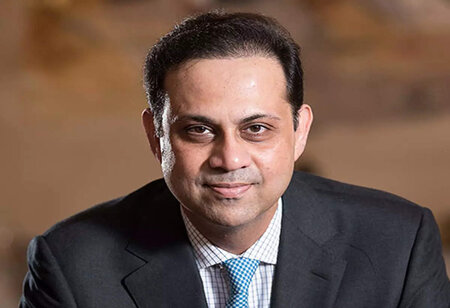Era of upsurged interest rates; encourage cut in duties on fuel: CII
 Confederation of Indian Industry (CII) has recently said an immediate measure to moderate inflation could be to moderate taxes on fuel products, which constitute a large share of the retail pump prices of petrol and diesel.
Confederation of Indian Industry (CII) has recently said an immediate measure to moderate inflation could be to moderate taxes on fuel products, which constitute a large share of the retail pump prices of petrol and diesel.
“CII would encourage Centre and state governments to collaborate in reducing these duties,” CII President Sanjiv Bajaj said.
The RBI decision to raise benchmark interest rates and the likelihood of a good monsoon will help in containing inflation, Bajaj said, addressing his maiden press conference after taking over as the CII chief.
“I do believe that we are now in an era of higher interest rates. This will help us in bringing down inflation, at least a part of that going forward,” Bajaj said, adding that various factors combined with the hope of a strong monsoon “should put us in a better place” by the second half of the year for policymakers to decide where inflation and interest rates move.
Bajaj said the rise of inflation has two aspects — demand and supply side. “RBI has already started the cycle of taking interest rates up and we should expect interest rates to continue moving up in the coming year. We would expect from the RBI a clear direction to how they are going to address interest rates. Hopefully in the next monetary policy review we should be able to hear from them something to that extent,” he said.
“Global headwinds and inflation will have to be countered with robust policy reforms, both domestic and external sector reforms, to unlock the growth potential of the economy,” Bajaj said.
“CII expects the GDP growth in a range of 7.4-8.2 per cent in 2022-23, with the outlook critically hinging on the trajectory of global crude oil prices, he said.
“Global headwinds and inflation will have to be countered with robust policy reforms, both domestic and external sector reforms, to unlock the growth potential of the economy,” he said. Tailwinds that are supportive of growth in the short-term include government capex, private sector investment which is showing an uptick aided by strong demand in some sectors and the PLI push in the others, good agriculture season on the back of the expectations of a good monsoon and positive export momentum, he said.
Bajaj said that India has the potential to become a US$ 40 trillion economy by the time it turns 100, in 2047, with milestones at $5 trillion by 2026-27 and $9 trillion by 2030-31.
Highlighting the sectoral drivers of growth, Bajaj said that manufacturing and services will be the twin engines of growth. The enabling policies of the government, particularly the PLI scheme, are expected to push manufacturing sector’s contribution in GVA (gross value added) to 27 per cent by FY48.
On the important policy agenda for this decade and to set the growth momentum firmly in place, Bajaj outlined a 10-point agenda for the government. Both central and state governments must increase their expenditure on public health and education to make these services accessible to all, he said.
He said India should focus on scale and technology to power Atmanirbhar Bharat. More sectors should be brought under PLIs, especially those which are labour intensive such as leather, footwear, toys and sectors where our imports are high, but there is a possibility of building a competitive domestic industry for example capital goods. Employment linked incentive schemes should be launched for select services sectors which have high growth potential, can generate jobs and can earn foreign exchange. Financial sector reforms are crucial for financing growth. Measures such as enabling the NBFCs to offer full banking services, deepening the corporate market, increasing insurance penetration among others are important to finance Indian economy’s journey on a high growth path, he said.


